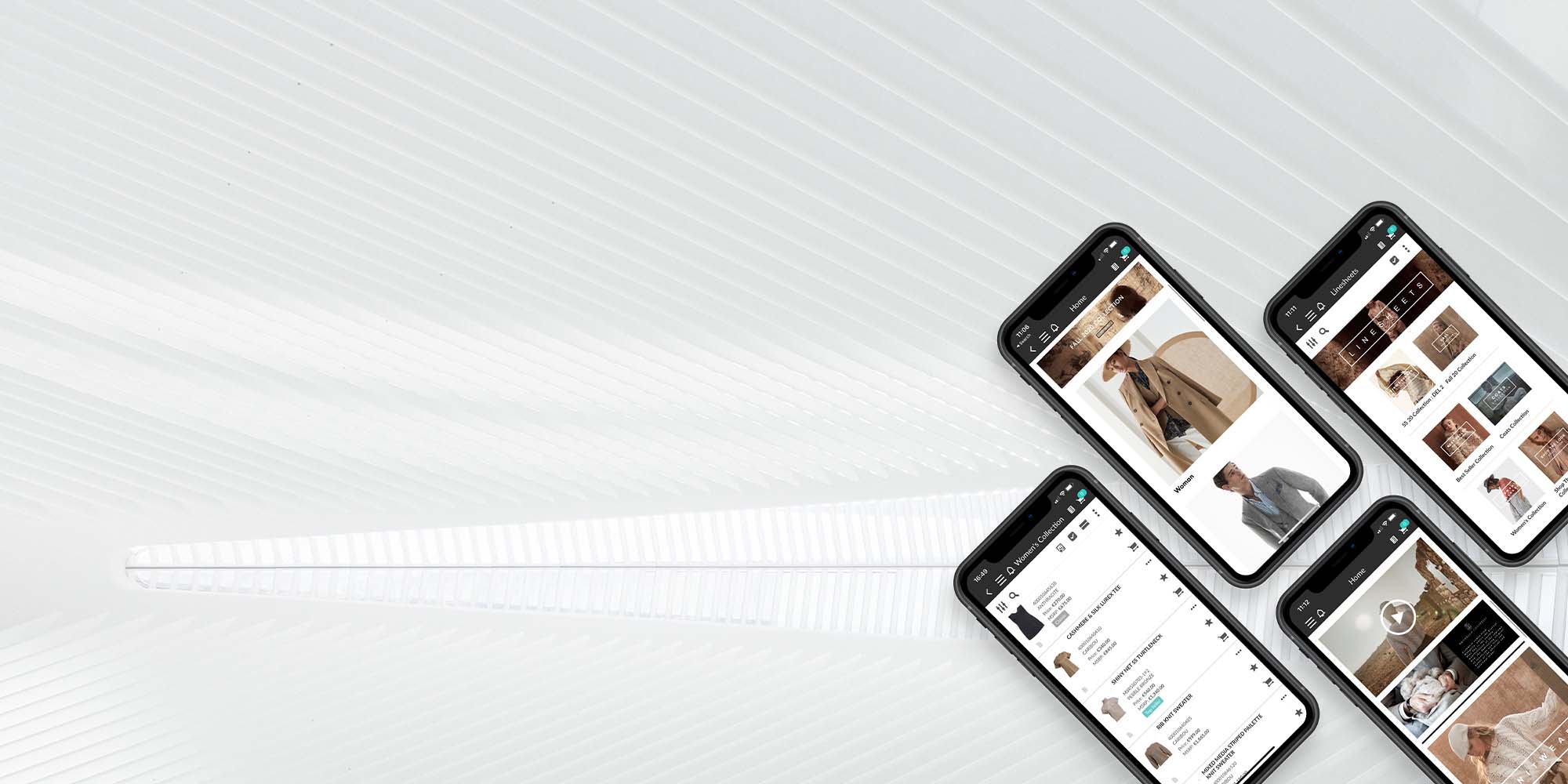Sustainable wholesale practices: 3 ways tech makes a difference
In this post, dive into the ways tech is encouraging sustainable wholesale practices.

Virtually bringing products to life can help heal some of the industry’s most harmful habits. According to the United Nations Economic Commission for Europe (UNECE), the fashion industry accounts for approximately 10% of carbon emissions worldwide. It’s a massive figure, but tech offers opportunities for change. Remote selling, B2B eCommerce and digital tools are transforming the eco-impact of manufacturers, retailers and brands. There’s a reduced need for travel, the industry requires fewer physical samples and informed data and insights are leading to better-informed buys. Read on to learn more.
Reduced Travel
The industry is reducing its carbon footprint. Brands and retailers are traveling less, thanks to B2B eCommerce platforms and other savvy digital tools. Traveling across the country and even internationally for markets and fashion shows has now become a luxury reserved for only the highest-priority events. It is now widely-known that the best virtual showrooms, digital trade shows and virtual appointments are more than capable of translating collections, facilitating mid-market and in-season sales, and nurturing relationships between retailers and brands.
For example, brands can easily use their virtual showrooms to share high quality visuals and detailed product information, including categories, colorways and delivery dates. Shoppable images and videos create engaging experiences for brands while offering one-click access to key information for specific SKUs, while 360 imagery offers insights into design details, fabrics and fit. Custom pages are configured to present key designs, color palettes, collection inspiration, brand videos and more.
Then there’s the ability to work closely (yet remotely) with wholesale buyers. Brands can create personalized assortments and share custom linesheets to offer exclusives, special edition pieces or edits simply deemed relevant for their stores. They can also whiteboard collaboratively with buyers over virtual appointments, while order drafts, digital notes and real-time inventory insights encourage collaboration while reducing human error. Brands can follow up later with custom linesheets to help retailers visualize their tentative buys.
Digital Samples
Expensive and time-consuming, sample production has long represented a challenge for the industry. More recently, its environmental impact has also become clear. Thankfully, new tech tools are coming to the rescue, helping brands digitize their samples to produce less, reducing both carbon footprints and expenses. The right B2B eCommerce platform offers features that highlight digital samples with visual clarity and attention to detail. For example, shoppable virtual showrooms, catalogs and linesheets elevated with immersive imagery and in-depth product information recreate the in-person sample viewing experience for buyers and members of the press.
Digital samples help brands reduce:
- Material waste
- Water usage
- Energy consumption
- The use of chemicals and dyes
- Storage space facility requirements
- The need for travel
- Carbon emissions
Better-Informed Wholesale Buys
Tech even drives sustainability by improving wholesale buys. Retailers and brands are privy to their sales history information, offering a better understanding of bestsellers, slow-moving SKUs, areas of opportunity, peak sales periods and more.
Data-backed demand forecasting helps retailers improve sell-through via:
- Visualizing assortment planning
- Buying what consumers want
- Buying more strategically - better quantities, colors and sizes
- Discovering in-season replenishment opportunities
Data-backed demand forecasting helps retailers:
- Share savvier custom assortments with buyers
- Identify opportunities for collaborations and exclusives
- Identify strongest wholesale partners
- Strengthen relationships with buyers
Give your business an eco-upgrade: request a NuORDER demo.
Related articles
Get on the list
Wholesale tips and industry news you can’t miss, delivered weekly
